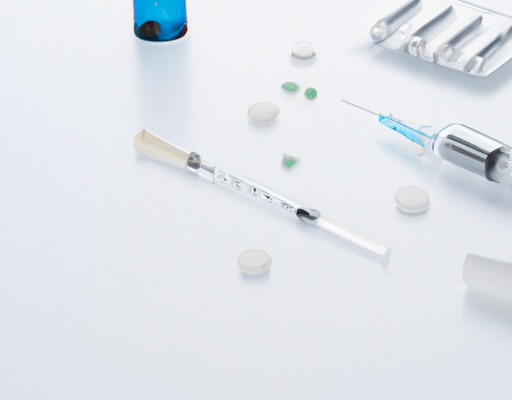• Definition of Rash
A rash is an inflammation of the skin that is characterized by a change in texture, appearance or color. It is often accompanied by itching, burning sensation, and can range from a mild annoyance to a serious medical condition. Rashes can be caused by a variety of factors, including allergies, infections, autoimmune disorders, and irritation from certain fabrics.
- Allergies
- Infections
- Autoimmune disorders
- Irritation from certain fabrics
It is important to remember that not all rashes are itchy. Many rashes, such as contact dermatitis, may cause redness and irritation but no itching. In other cases, the rash may be caused by an underlying medical condition that requires more extensive treatment. Regardless, if you have a rash that is not itchy, it is important to seek medical help to determine the cause and the best course of action.
• Types of Rashes
Rashes are very common in humans and can vary greatly in symptoms, cause and appearance. They can range from mild and barely visible to more severe and itchy. In general, rashes can be categorized into the following types:
- Allergic Rash: A rash caused by an allergic reaction. These rashes may manifest in redness and itching of the skin and may also be accompanied by other symptoms like a runny nose or inflamed eyes.
- Contact Rash: This type of rash is caused when skin comes in contact with an allergen or irritant. This type of rash may include small bumps, blisters, hives and swelling.
- Infectious Rash: These are rashes caused by bacterial, viral, or fungal infections. Common types of these rashes include scabies and chickenpox.
- Autoimmune Rash: Autoimmune rashes are caused when the body’s immune system mistakenly mistakes healthy cells as foreign or dead cells. These rashes tend to be itchy or painful.
- Heat Rash: Also known as prickly heat rash, this rash is caused by excessive sweating and is usually common in hot, humid weather. It is characterized by small clusters of red bumps on the skin.
- Psoriasis: This is a chronic skin condition, which is caused by an overactive immune system. It is characterized by red patches of skin, often with silvery scales on top.
It is important to note that not all rashes are itchy. Some of the common non-itchy rashes include eczema and psoriasis. No matter what type of rash you have, it is important to seek medical help in order to properly diagnose and treat it.
• Causes of Rashes
When it comes to mysterious skin problems, rashes are often the first culprit suspected. Caused by a variety of factors, rashes can be irritating and uncomfortable, but not always itchy. Below are some of the common causes of rashes:
- Infections such as chickenpox, shingles, or measles
- Allergies to foods, medicines, or other substances
- Insect bites or stings
- Exposure to chemicals such as chlorine, formaldehyde, and fertilizer
- Extreme weather, such as heat or cold
- Skin problems such as eczema, psoriasis, or contact dermatitis
- Sensitivity to certain fabrics, such as wool or synthetic materials
- Autoimmune disorders, such as lupus or vasculitis
Understanding the cause of a rash can help determine the best way to treat it. Skin rashes can vary in severity, and some require medical attention, so it’s important to know when to call a doctor.
• Signs and Symptoms
Rashes can take many different forms, depending on the underlying cause. Generally, they are red, raised, and appear on the skin without any itching or pain. They may look slightly painful or they may be soft and slightly lumpy. Some may also have visible patches or spots surrounding the main rash. Common signs and symptoms of a rash include a burning sensation, warmth, swelling, peeling, in some cases fever, and pain in the affected area. In rare cases, numbness or tingling can also be present. If a rash does cause itching, this could be a sign of an underlying infection. In this situation, it is recommended to speak to a medical professional.
• Diagnosis
When diagnosing a rash, a health care professional typically starts by taking a thorough medical history and performing a physical exam to look at the affected area. The doctor may then recommend tests such as a skin biopsy, blood tests, imaging studies, and/or other specialized tests in order to determine the cause of the rash. Depending on the location and type of rash, a doctor may also consider conditions such as allergies, autoimmune diseases, infections, and other potential triggers. Once the cause is identified, the doctor can then recommend treatment, which could involve the use of medications, lifestyle changes, or additional management strategies.
• Treatment
When it comes to treating rashes, it is essential to determine the cause before you can gain any relief. If the rash is due to an allergic reaction to something you have been exposed to, avoiding the trigger is often all that is needed. If the rash is due to a skin condition, treatment with a topical ointment, cream, or medicated soap may be necessary. Severe cases may require treatment with a course of oral medications. If there is an infection causing the rash, antibiotics may be necessary. Other treatments may include phototherapy, where a specific light wave or a special device is used to treat the rash. It is always best to seek medical advice before trying any form of treatment.
• Prevention
Preventing rashes from occurring in the first place is key in avoiding the discomfort associated with them. To do this, start by identifying any potential irritants in your environment, such as laundry detergent, soap, or fabric softener. When using such products, make sure to read the label for potential allergens or irritants you may have. Try to wear natural fabrics, such as cotton and wool, and avoid synthetic materials like polyester, which can trap sweat and cause the skin to become irritated. Practice good skin hygiene, such as washing your skin regularly with mild soap and lukewarm water, and moisturizing your skin regularly to keep it healthy and hydrated. Finally, be sure to protect your skin from the sun with sunscreen, hats, and clothing to reduce risk of developing a rash. Taking these preventative steps can help keep your skin healthy and free of rashes.
• Outlook
Rashes can be uncomfortable and often itchy, but there are some that won’t cause any itchiness. Depending on the type of rash, the outlook can vary, but in general they are not dangerous and should clear up without any issues. Here’s an overview of what to expect:
- Chronic rashes may cause some discomfort but should not cause any itchiness.
- Contact dermatitis usually responds to topical treatments and should clear up within a few weeks.
- Thickening of the skin due to sun damage may not cause any itchiness and can be treated effectively with moisturizer and sunscreen.
- Eczema may cause some discomfort but should not cause any itchiness.
- Bacterial rashes should clear up within a few days with appropriate treatment.
In some cases, a rash may indicate a more serious medical condition, so it’s important to keep an eye on it and seek medical attention if it doesn’t improve. In most cases, however, a rash that doesn’t cause any itching should clear up without any issues.





No Comments